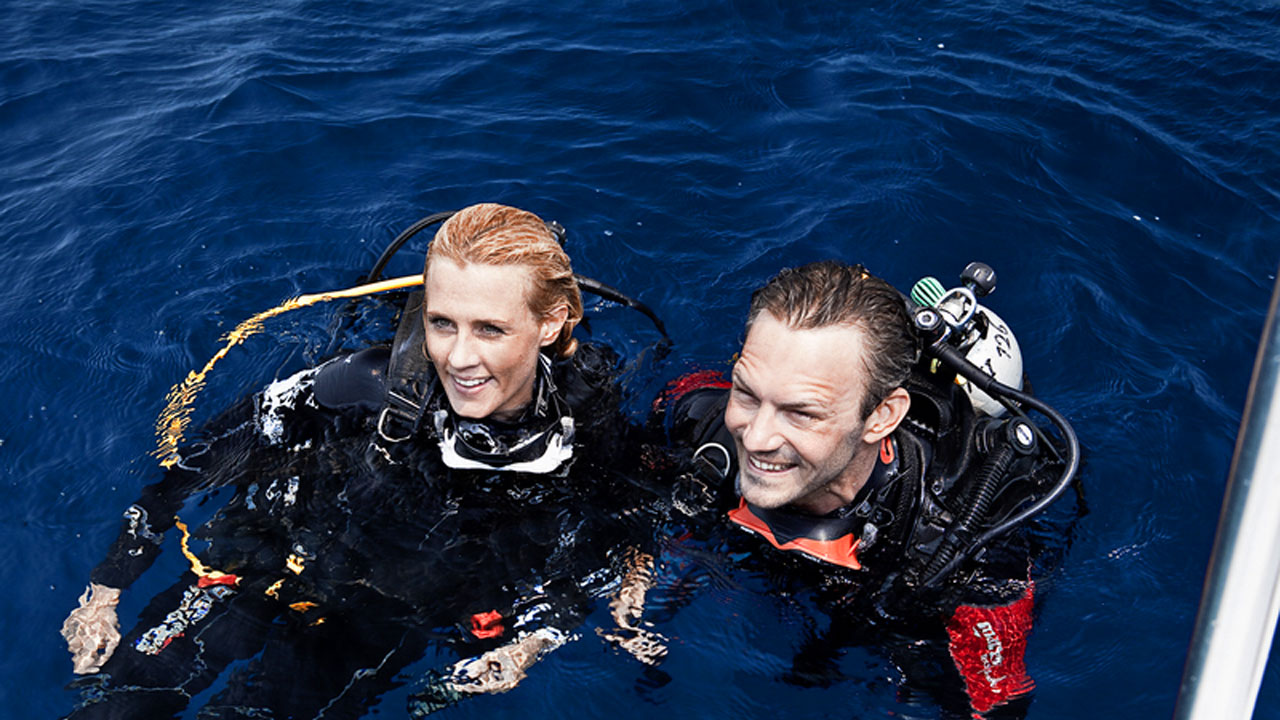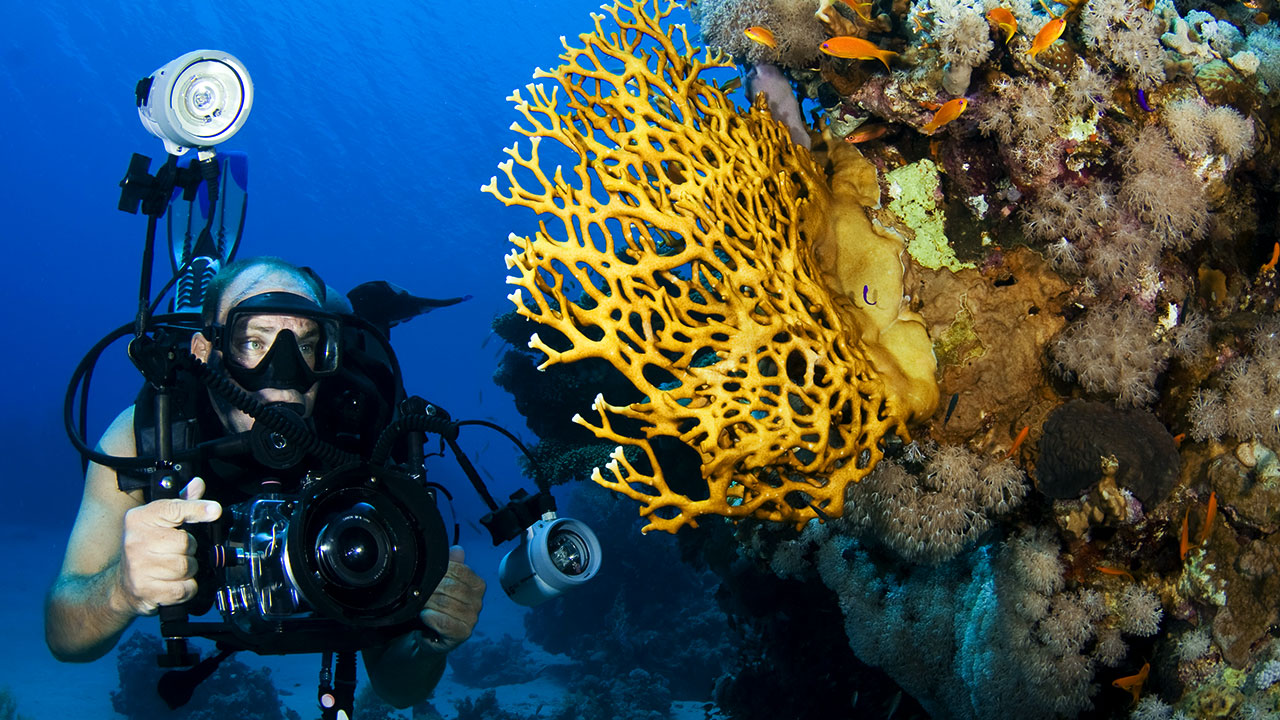Where Is My Buddy: What to Do if You Get Separated

The buddy system is something that every diver learns during their very first certification course. No matter whether you are an experienced diver or a newbie, the general rule is that you should always dive with a partner. The most apparent reason for following the buddy system is that it can minimize the chances of diving accidents. Having someone at your side grants you a sense of safety and gives you confidence. Nevertheless, it may happen that you lose sight of each other during the dive. Getting separated from your buddy can be an unpleasant experience evoking anxiety and disorientation. So you should know how to prevent and deal with buddy separation if it does happen to you.
What can lead to buddy separation?
Although there exist quite a few factors that can lead to buddy separation, simply being aware of them and taking necessary precautions during your dive planning will help you avoid any unfortunate incidents. The following situations are the most prevalent among the reasons for buddy split-ups.
- Poor visibility. Diving in low light conditions is among the leading reasons for buddy separation. By using dive lights or simply banging on your tank from time to time, you can efficiently compensate for low visibility and evade the separation. You can read more about diver communication in low visibility in the following article.
- Equipment malfunction. A diver who experiences equipment failure can be easily distracted. While one is busy with his or her equipment, the other may not notice this and just keep swimming further. To avoid this situation, both of you should check on each other from time to time and remember that keeping constant contact is a must.
- Strong currents. A current can push you and your buddy apart leading to dangerous outcomes, especially if you are not prepared for this. Therefore, you are strongly encouraged to learn as much as you can about the site before diving there. If you decide to go current diving, make sure you plan ahead, paying special attention to your route during the dive and any additional equipment you may need. In some cases, using a dive line or tether to link you and your buddy together will be a wise precaution.
- Diving in overhead environments. Cave and wreck diving can pose a higher risk of buddy separation due to low light conditions and a need to adopt the leader-follower setup in many cases. It can be extremely helpful If both of you have dive torches as they will attract your attention making it easier to keep each other in sight.
- Miscommunication. Clear communication between you and your dive partner is a crucial part of your diving practice. Make sure you discuss your dive plan in detail and actually stick to that plan during the dive.
How can you prevent buddy separation?
Good preparation for your upcoming dive can decrease the chance of buddy separation greatly. You should thoroughly plan your dive with your buddy and determine clear rules for underwater communication. Specify the route and the maximum depth to avoid any misunderstanding once you are underwater. Moreover, as there are no standard rules for what to do in case of buddy separation, you and your dive partner should come up with a detailed plan of your actions in case you accidentally split up underwater. An explicit separation protocol is especially important if you are planning to dive on a drift dive or in low-light conditions. For instance, you can come up with specific light signals to communicate certain messages with your dive torches.
In addition, once you are on a dive, you should use the following tips in order to decrease the probability of separation even more:
- If visibility is good, remain within 3-5 meters of your buddy.
- Constantly check on each other. Create a good habit to check on your buddy every 2-5 minutes.
- Remember about blind spots behind you and above your head and do not forget to check there, if you do not see your buddy.
- On low visibility dives, stay within 1-2 meters of your buddy.
- For extremely low light conditions or in intense drift dives, consider using a buddy line or tether.
- If the conditions get severe or dangerous and may cause separation, do not hesitate to cancel the dive.
- Always stick to the agreed plan to avoid any confusion or misunderstanding underwater.
What to do if you get separated?
Sadly, even with the most rigorous preparation, divers sometimes become separated, hence the need for due consideration of the separation protocol. If you ever find yourself in such a situation, the first thing you should remember is to remain calm. Then, do the following (in fact, both of you should do this):
- Slowly do a 360-degree rotation, looking above and beneath you. Stay at one place and don’t go swimming around.
- Look for the distinct signs that may point to the location of your buddy, like bubbles or disturbed sand or silt.
- If you still can’t find them, use sound to attract your buddy’s attention. You can use an underwater whistle or a simple tank banger for this purpose. Pause and listen for any sound possibly coming from your buddy in return. But remember that sound gets easily distorted and that it is difficult to locate it underwater.
- Use your dive light when rotating in a search for your buddy. If you have some pre-decided light signals, it is the best time to use them.
- You should agree on the overall duration of this search. Generally, people recommend spending a minute searching for your buddy. During your dive planning, you can also decide to extend or decrease this time.
- After one minute of searching, start ascending to the surface slowly spinning around as you move up. Do not forget about safety stops.
- Once you are on the surface, perform a 360-degree rotation once again. You can also call out for your buddy. At this point, you should not descend again for the sake of your own safety.
- Wait for some time at the surface (it is better if you pre-decide this time during your dive planning as well), and go back to the dive boat. If you haven’t spotted your buddy by now, report them as missing. In case you are on a shore dive, right after you reach the shore, inform the beach safety guard about your missing dive partner.
Generally, if you both follow the separation protocol strictly, you should be able to find each other or meet either on the surface or on the boat.
Last but not least, these are just general guidelines of a separation protocol, which you can refer to while planning a dive with your buddy. You are free to make changes or to add some points that will suit your particular situation. The important thing is that you do go through this with your buddy and follow the procedures you agreed upon.
In conclusion, buddy diving has many benefits and advantages. The most important one is that your buddy can save your life in a dangerous dive accident. The buddy system makes you feel safer and more confident. No wonder losing a buddy can be a very stressful event. Remember that there’s no need to panic. Keep calm and follow the predefined separation protocol.




